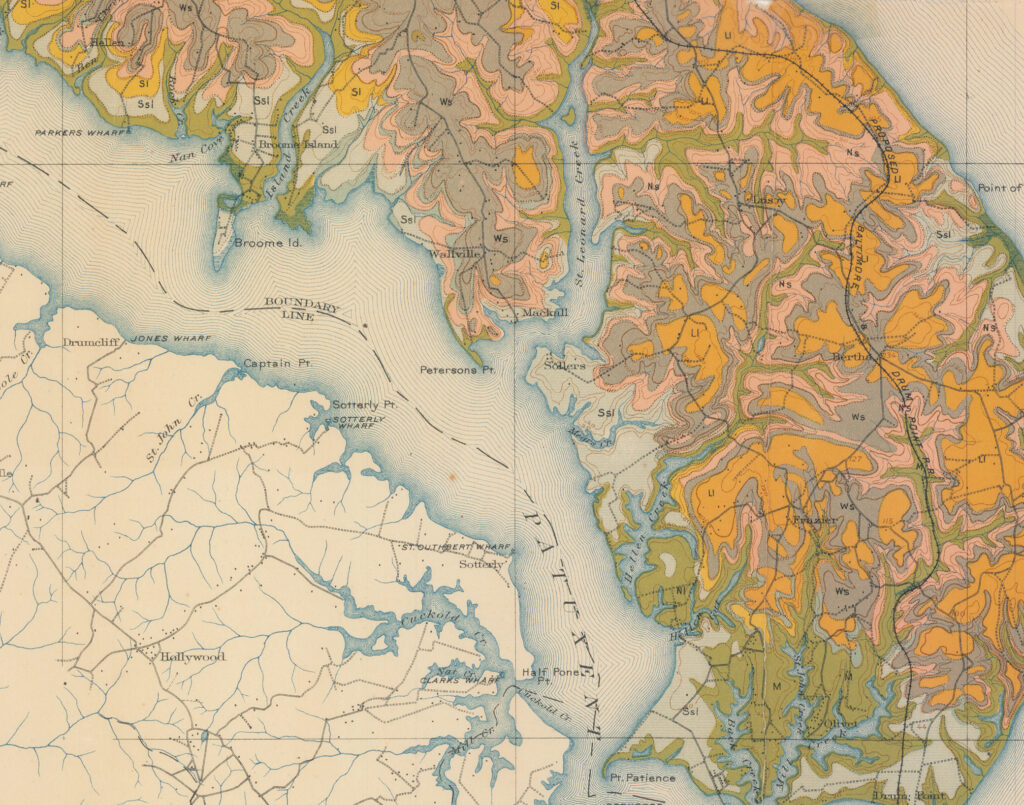Saving Forgotten History


Museum gets funding to study Wallville
By Susan Nolan
The Civil War brought rapid change in the lives of both Black and white Marylanders. Without the labor of the enslaved Black workforce, landowners had trouble maintaining their large tobacco farms. They sold and/or rented tracts of their land to newly emancipated Black families. Vibrant rural communities were created. One such community was called Wallville.
Much of what was once Wallville was the former Peterson estate, developed as Point Farm by Jefferson Patterson beginning in the early 1930s. Today it is the Jefferson Patterson Park and Museum (JPPM), a 560-acre state-owned property along the Patuxent River in Calvert County. JPPM is home to the Maryland Archeological Conservation Lab that houses over 8 million artifacts collected from sites all over the state. Historic maps, census records and oral histories indicate that at least 10 Postbellum Wallville sites are located on the grounds. Three others are on adjacent private property.
The exact population of Wallville is unknown and the community’s geographic boundaries are uncertain. Preliminary research suggests that in the late 19th century, some residents of Wallville were farming. Many supplemented their farming income by working on crabbing and oystering vessels or in oyster canneries.
What is known, however, is that many residents left in the early 20th century—and historians are eager to learn more about them. “In our study, we hope to determine the factors that led to this diaspora,” says Patricia Samford, director of the MAC Lab.
Samford and her colleagues are working on a collaborative project called “Witnesses of Wallville: Documenting a Rural Southern Maryland Community.” Last month, the Maryland Historical Trust and the Maryland Department of Planning announced the project has received $49,000 in funding from an African American Civil Rights grant from the Historic Preservation Fund administered by the National Park Service, Department of the Interior. The National Park Service’s African American Civil Rights Grant Program funding helps preserve sites and history related to the African American struggle for equality. The money will fund ongoing research, including archaeological excavations.
“We have already started doing documentary research,” says Samford, “and have started going through previously collected oral histories for relevant information.”
The project will examine the social and economic history of Wallville’s Black citizens, as well as the important roles of churches, schools, fraternal organizations, and extended family. The evidence and the stories it reveals will be used by JPPM to prepare a history of this community, including interpretive materials, and consultation with descendants of the Wallville community.
These sites will be located and recorded using a combination of archaeological and historical research and the data recovered used to create a portrait of Wallville and the factors that influenced its changing demographics over eight decades following the Civil War.
A steering committee of staff and community consultants expect to hold their first meeting this month and are eager for community participation as well. “We plan to hold a public meeting to seek input from Wallville residents and from descendants of former Wallville residents,” Samford states.
Excavations of Wallville sites will take place in spring 2023, and by fall, staff will share their discoveries on a website and interpretative panels along walking trails. Additionally, they plan to publish a booklet to be distributed through libraries, historical societies, genealogical groups, Wallville descendants, and to attendees at the annual Calvert County NAACP Community Day held at JPPM.
The program will allow for some limited public archaeology in which volunteers can participate in the excavations. The first public meeting is being planned now. Interested parties are encouraged to follow JPPM on social media and check jefpat.maryland.gov for updates.
